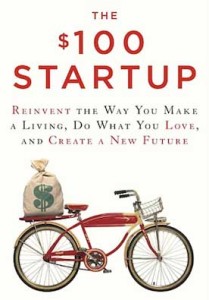
I frequently get asked “How do I build my budget for marketing if I’m practicing Agile Marketing? Finance is asking me for an annual budget; how do I give them numbers if I don’t know what I’m doing beyond the next one or two sprints?”
One answer is to throw out year in advance budgets, just like you toss out yearly marketing plans. Too much can change, and a yearly budget for most businesses is an approximation, and often not very accurate. However, I realize that this option may not always be available, so I have a different suggestion.
Base your budget not on marketing activities, but by understanding the average lifetime value of a customer, as well as the average cost of acquisition of that customer, and marketing’s portion of that cost of acquisition. So if the CEO forecasts a certain revenue number for the year, break that number up into revenue from existing customers and revenue from new customers. Determine how much you need to spend, on average, marketing to existing customers (getting them to buy new products, upselling, etc) and know this number per customer. For example, if the revenue goal from new customers is $10 million, and the average revenue per existing customer is $100 per year, and you need to spend $5 per customer per year marketing to these existing customers, then your budget for this portion of your marketing is $500,000 ($10M divided by $100 times $5).
For acquisition of new customers, you should apply similar math. If the goal is to acquire 50,000 new customers in the coming year, and the average lifetime value of a customer is $500, and the marketing costs associated with acquiring that customer are 15% of the average lifetime value, or $75, then your budget for acquiring new customers for the coming year is $3,750,000.
Note that this model takes into account whether a business is mature, where most of the revenue comes from existing customers, or in growth mode, where acquisition of new customers is the primary focus.
Understanding your marketing costs in this way has a host of benefits. First, it focuses you on the right goals: acquiring new customers and the revenue that they bring with them. Second, if the goals change during the year, as they frequently do, it’s much easier to have a conversation about changes to the budget. For example, if the revenue budget is increased by 25%, primarily by bringing in new customers, then you should be able to calculate the marketing costs of bringing in those new customers. If the CEO says that he wants to increase the revenue budget with no corresponding increase in marketing, then the cost of acquisition would have to come down, and probably severely. That may or may not be realistic. But rather than make the conversation about whether you should participate in this trade show or run these ads, you can have the conversation around cost of acquisition, something the CEO and finance people are much more likely to understand.
Budgeting for marketing costs in this way also allows you to evaluate your marketing activities. If you need to get 1000 new customers, and your conversion rate from qualified lead to sale is 10%, then you need 10,000 qualified leads. If the conversion rate from the top of the funnel, unqualified leads, to qualified leads is also 10%, then you need 100,000 unqualified leads. If each of those unqualified leads costs you $2.00, say from a Google ad, then you’re in trouble, because it’s costing you $200 per sale ($2 divided by 10% divided by another 10%), more than twice your budget of $75 per new customer. You need to either improve your conversion rates or spend less on the cost of an initial unqualified lead or most likely, a combination of the above. If you could get the initial cost down to $1.50, improve the conversion rate from unqualified to qualified to 14%, and the close rate on qualified leads to 15%, then you’re at a cost just over $71 per acquisition.
How do you approach creating a budget for marketing? I’d love to hear your thoughts.



Pingback: How to Budget for #Marketing | mHealth marketing | Scoop.it
Pingback: How to Budget for #Marketing | mHealth marketing | Scoop.it
Jim – Great thoughts here and they come at the perfect time with many of us working on budgets right now. Your post makes perfect sense. If you are a startup, or new business, this approach would bring logic to the process. I see the challenge as selling through to clients if you are an agency, or to superiors if you are in an internal department. Any other thoughts on how to sell this through?
Sam, I agree, it’s a challenge to sell this method in a very large company or to a client that is sufficiently large. My one thought would be to still try to sell marketing as a percent of expected sales, and trying to tie it to results. You may not be able to get it down to the level of acquisition of an existing customer, but even having a discussion about where the money gets spent: how much on maintaining the existing customer base, how much on growing the customer base, and what activities and percent of marketing goes for those activities – that discussion would be very helpful.
-Jim
Jim – Great thoughts here and they come at the perfect time with many of us working on budgets right now. Your post makes perfect sense. If you are a startup, or new business, this approach would bring logic to the process. I see the challenge as selling through to clients if you are an agency, or to superiors if you are in an internal department. Any other thoughts on how to sell this through?
Sam, I agree, it’s a challenge to sell this method in a very large company or to a client that is sufficiently large. My one thought would be to still try to sell marketing as a percent of expected sales, and trying to tie it to results. You may not be able to get it down to the level of acquisition of an existing customer, but even having a discussion about where the money gets spent: how much on maintaining the existing customer base, how much on growing the customer base, and what activities and percent of marketing goes for those activities – that discussion would be very helpful.
-Jim
Great article to a very timely question! I think that if businesses are able to budget this way the end benefit is that the marketing, including the budget, becomes much less vulnerable in trying times. It ties marketing to hard and measurable values (like sales) rather than to abstract values (like brandbuilding) which should be a language most C-level execs, also in large operations, can appreciate. And still you maintaing the agility to continually change and optimize within the framework.
Thanks for the kind words Annette
Great article to a very timely question! I think that if businesses are able to budget this way the end benefit is that the marketing, including the budget, becomes much less vulnerable in trying times. It ties marketing to hard and measurable values (like sales) rather than to abstract values (like brandbuilding) which should be a language most C-level execs, also in large operations, can appreciate. And still you maintaing the agility to continually change and optimize within the framework.
Thanks for the kind words Annette
Pingback: How to Budget if you're Agile
Pingback: How to Budget if you're Agile
Pingback: Software Marketing Tweetables 5 November 2012 | Smart Software Marketing